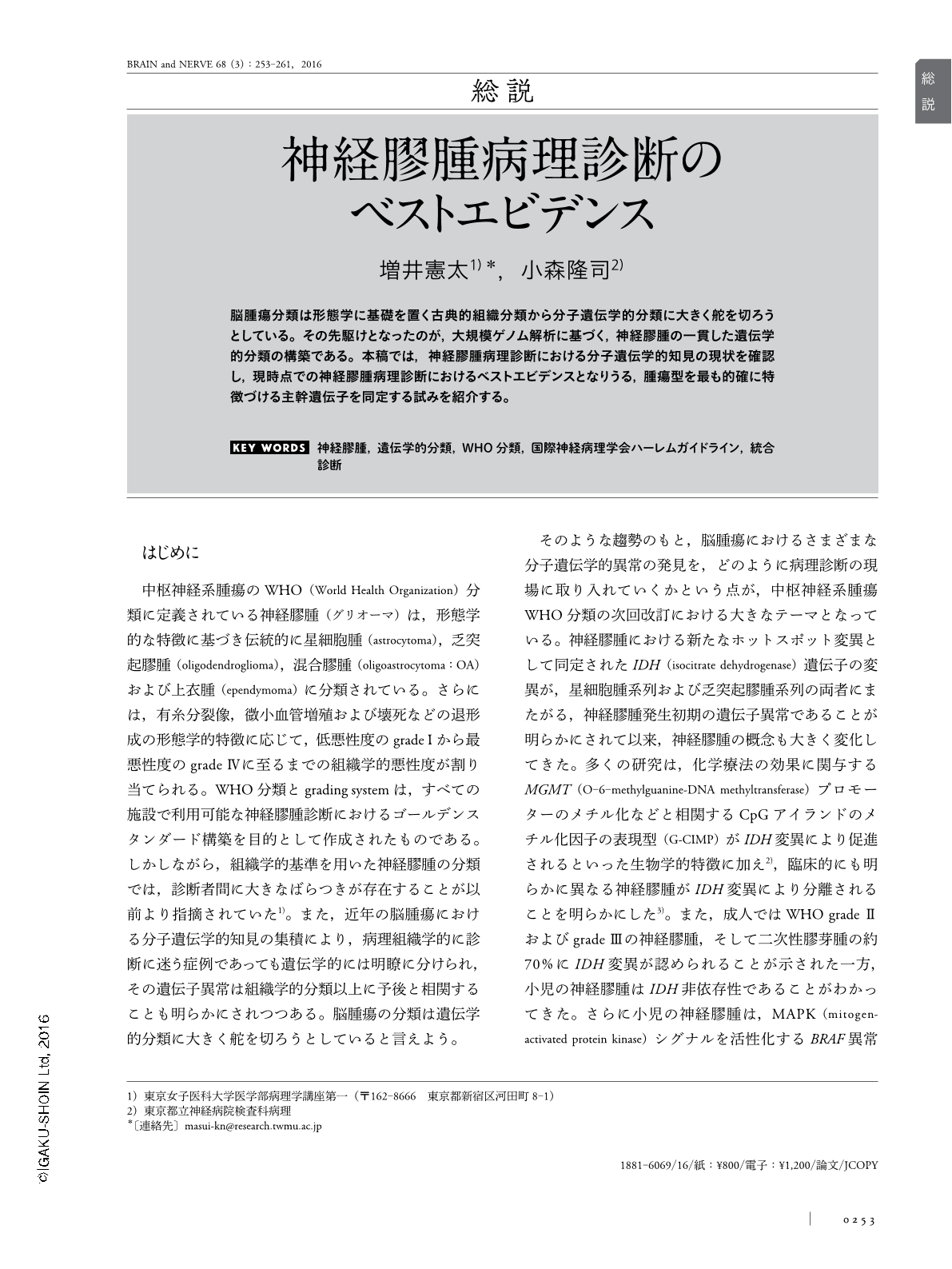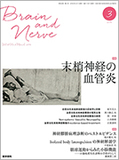Japanese
English
- 有料閲覧
- Abstract 文献概要
- 1ページ目 Look Inside
- 参考文献 Reference
脳腫瘍分類は形態学に基礎を置く古典的組織分類から分子遺伝学的分類に大きく舵を切ろうとしている。その先駆けとなったのが,大規模ゲノム解析に基づく,神経膠腫の一貫した遺伝学的分類の構築である。本稿では,神経膠腫病理診断における分子遺伝学的知見の現状を確認し,現時点での神経膠腫病理診断におけるベストエビデンスとなりうる,腫瘍型を最も的確に特徴づける主幹遺伝子を同定する試みを紹介する。
Abstract
The development of a genomic landscape of gliomas has led to the internally consistent, molecularly-based classifiers. However, development of a biologically insightful classification to guide therapy is still ongoing. Further, tumors are heterogeneous, and they change and adapt in response to drugs. The challenge of developing molecular classifiers that provide meaningful ways to stratify patients for therapy remains a major challenge for the field. Therefore, by incorporating molecular markers into the new World Health Organization (WHO) classification of tumors of the central nervous system, the traditional principle of diagnosis based on histologic criteria will be replaced by a multilayered approach combining histologic features and molecular information in an “integrated diagnosis”, to define tumor entities as narrowly as possible. We herein review the current status of diagnostic molecular markers for gliomas, focusing on IDH mutation, ATRX mutation, 1p/19q co-deletion, and TERT promoter mutation in adult tumors, as well as BRAF and H3F3A aberrations in pediatric gliomas, the combination of which will be a promising endeavor to render molecular genetics as a best evidence in the glioma diagnositics.

Copyright © 2016, Igaku-Shoin Ltd. All rights reserved.


